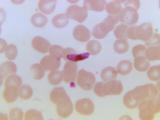Aug 4, 2010
Dengue cases increase in Key West
The Florida Department of Health (FDH) confirmed 24 new cases of dengue fever in Key West, Fla., through mid July, according to a CNN report. Of these cases, 18 were in Key West residents, 5 in other Floridians, and 1 in a resident of another state. The FDH also reported 49 cases of the mosquito-borne disease in those who had traveled outside the state to endemic regions such as Latin America. Officials fear the disease will gain a foothold in the Florida Keys and spread north. Symptoms appear 3 to 14 days after the bite of an infected mosquito and typically include sudden onset of fever, severe headache, severe pain behind the eyes, bleeding, and muscle, joint, and bone pain. An uncommon but serious complication, dengue hemorrhagic fever, can be fatal if left untreated. In May the US Centers for Disease Control and Prevention (CDC) reported 27 dengue cases in Key West residents, but only 1 of them was from 2010.
Aug 3 CNN
report
May 21 CDC report
Nestle study finds very low levels of E coli in flour
In findings presented at the International Association of Food Protection (IAFP) annual meeting this week, researchers from food giant Nestle found Escherichia coli O157:H7 contamination in only 1 of 32,220 samples of flour they tested, a rate about 100 times less than the prevalence of Salmonella in previous studies, according to Food Safety News. The study followed the finding of E coli O157:H7 in Nestle raw cookie dough last year, when 72 people in 30 states were infected. Company official Tim Jackson said that flour was the only ingredient not cleared at the supplier level in that outbreak. A representative from ConAgra at the IAFP meeting said he expects more demand for "heat-treated" flour, a technique that Nestle now employs.
Aug 3 Food Safety News story
Vibriosis closes two Washington State oyster-growing areas
Noting four cases of vibriosis in people who ate raw oysters and lab-confirmed Vibrio parahaemolyticus in the water, officials from the Washington State Department of Health (WSDOH) have closed two Hood Canal oyster-growing areas. Lab tests in Hood Canal Six, which runs from Hoodsport south and east to Twanoh State Park, showed the presence of V parahaemolyticus, which causes vibriosis. While no recent illnesses have been linked to oysters from that area, at least four cases of vibriosis have been confirmed in people who ate raw oysters harvested from the neighboring Hood Canal Five. The WSDOH closed both areas. Several other vibriosis cases have been identified this summer from growing areas around the state, which usually sees about 50 annual cases. Vibriosis symptoms include diarrhea, abdominal cramps, nausea, vomiting, headache, fever, and chills, which usually appear about 12 hours after eating infected
shellfish but can begin from 2 to 48 hours later. The illness is usually moderate and lasts 2 to 7 days but can be serious and even fatal in those with compromised immune systems.
Jul 30 WSDOH news release
Malaria researchers map risk, call for study of mosquito ecology
Using geographic and disease surveillance data, an international team of researchers estimates that 2.85 billion people were at risk in 2009 for Plasmodium vivax malaria, regarded as the most prevalent form of the disease. The researchers, led by scientists from Oxford University in the United Kingdom, concluded that 91% of the people at risk lived in Central and Southeast Asia, with 5.5% in the Americas and 3.5% in Africa, according to their report in PLoS Neglected Tropical Diseases. The team also estimated that 57.1% of those at risk lived in areas that have "unstable transmission," or less than 0.1 case per 1,000 people per year, meaning the prospects for sustained control and elimination are relatively good. In a press release, co-author Dr. Carlos Guerra said the study shows that P vivax malaria remains the most widespread form of the disease.
Aug 3 PLoS
Neg Trop Dis report
Aug 3 PLoS Neg Trop Dis press release
Meanwhile, another international team of experts writes that the goal of malaria eradication will require a strategic investment in and long-term commitment to studying the ecology of the mosquitoes that spread the disease. In a policy forum article in PLoS Medicine, the team asserts that scientists need to learn about aspects of the mosquito life cycle "beyond the blood feeding processes which directly mediate malaria transmission." Gerry Killeen of the Ifakara Health Institute in Dar es Salaam, Tanzania, and colleagues assert that existing control measures such as insecticide-treated nets and residual sprays cannot break the transmission cycle of P falciparum malaria in the most heavily affected areas of Africa and the Pacific.
Aug 3 PLoS
Med article
Aug 3 PLoS Med press release
Army takes aim at cutting-edge vaccine technologies
The US Army plans to promote both DNA-based vaccines and better technologies for delivering them into soldiers, according to a Wired story. In a solicitation to businesses last week, the Army asked for "multiagent synthetic DNA vaccines delivered by noninvasive electroporation." In addition to promoting DNA vaccines, which can be produced faster than conventional vaccines, the program intends to find the optimal way to deliver them to produce good immune response. Injecting DNA-based vaccines into muscle leads to inefficient uptake. So the Army is exploring painting the vaccines onto microscopic beads deposited into skin cells by gas propulsion, combined with "intramuscular electroporation," which involves administering short electrical pulses to maximize uptake.
Aug 3 Wired article
















